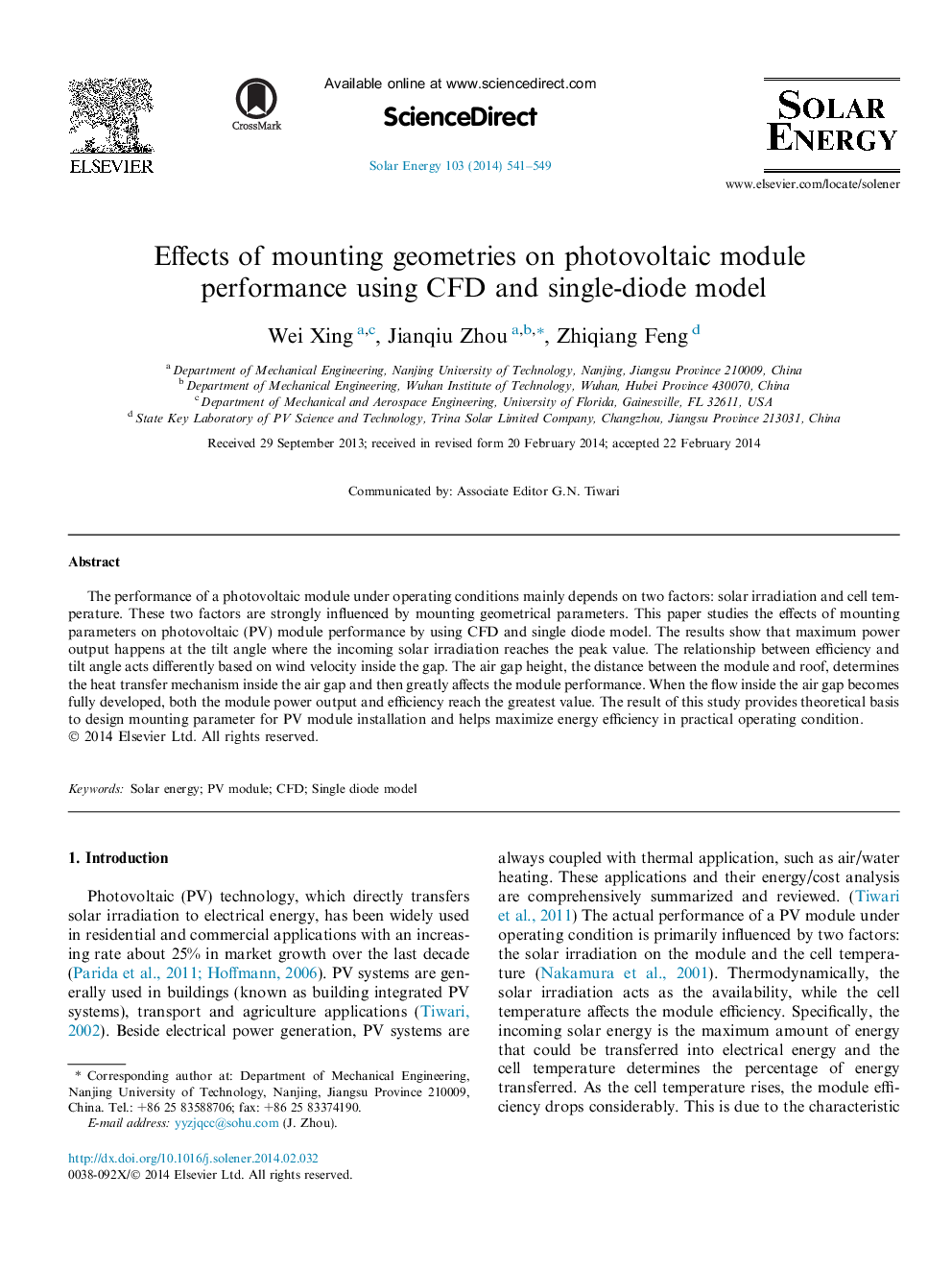| Article ID | Journal | Published Year | Pages | File Type |
|---|---|---|---|---|
| 7938392 | Solar Energy | 2014 | 9 Pages |
Abstract
The performance of a photovoltaic module under operating conditions mainly depends on two factors: solar irradiation and cell temperature. These two factors are strongly influenced by mounting geometrical parameters. This paper studies the effects of mounting parameters on photovoltaic (PV) module performance by using CFD and single diode model. The results show that maximum power output happens at the tilt angle where the incoming solar irradiation reaches the peak value. The relationship between efficiency and tilt angle acts differently based on wind velocity inside the gap. The air gap height, the distance between the module and roof, determines the heat transfer mechanism inside the air gap and then greatly affects the module performance. When the flow inside the air gap becomes fully developed, both the module power output and efficiency reach the greatest value. The result of this study provides theoretical basis to design mounting parameter for PV module installation and helps maximize energy efficiency in practical operating condition.
Related Topics
Physical Sciences and Engineering
Energy
Renewable Energy, Sustainability and the Environment
Authors
Wei Xing, Jianqiu Zhou, Zhiqiang Feng,
